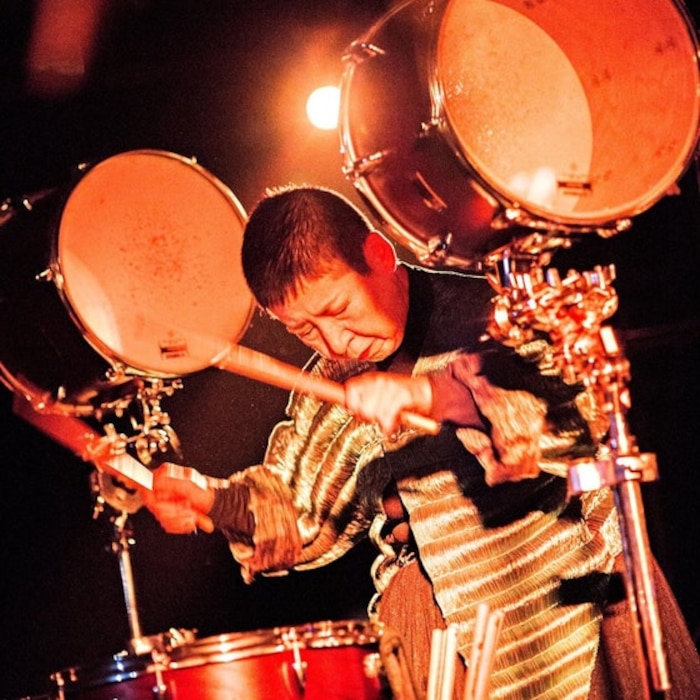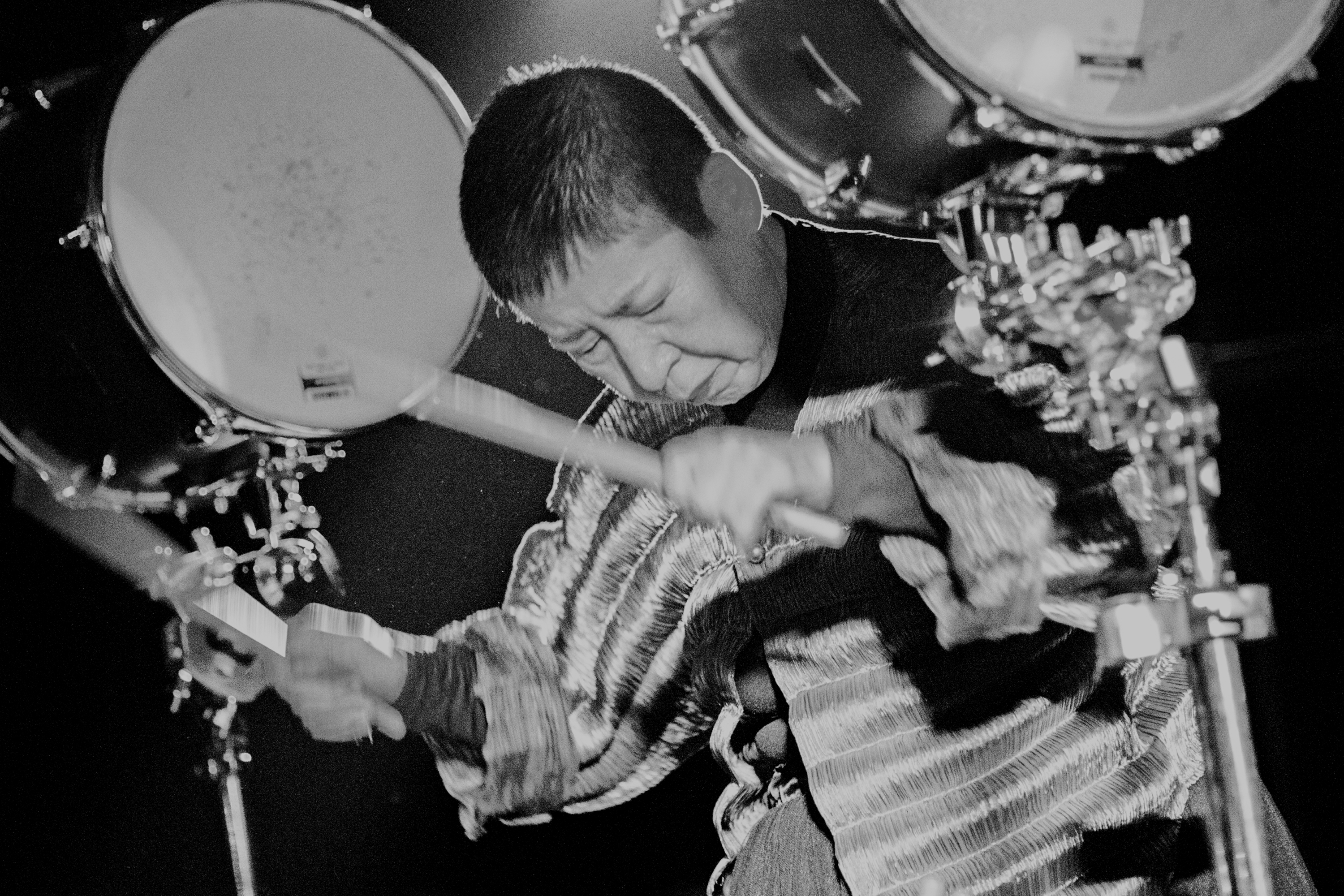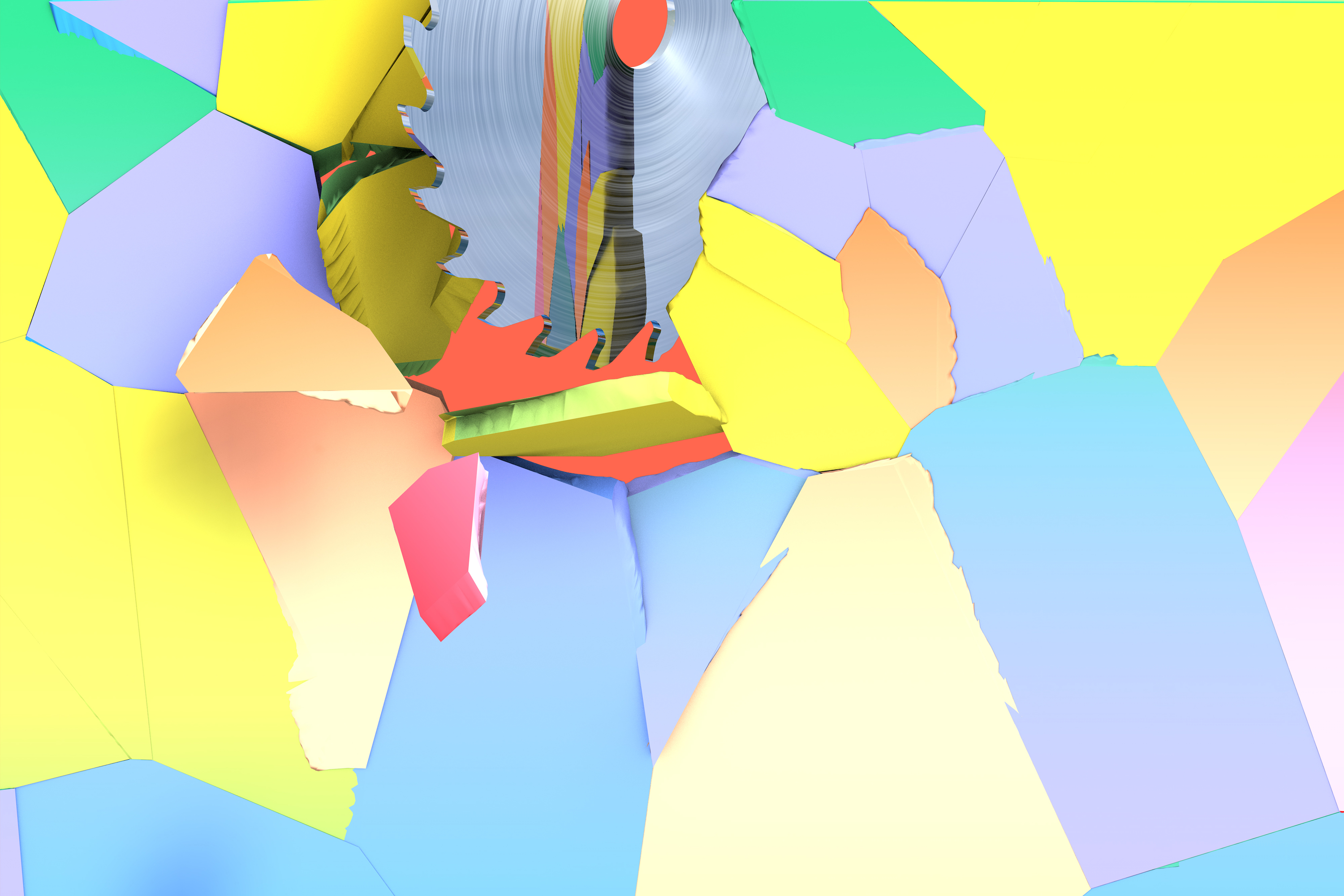Seeds, Leaves and Metal Chopsticks: Making Music with Midori Takada
The experimental Japanese composer and percussionist on her distinct sonic approach

An elusive Japanese composer, percussionist and sometimes actress, Midori Takada has been recording her unique twist on minimalism for over four decades. After releasing two albums in the early ’80s with the Mkwaju Ensemble, a Japanese group of artists who took their name from the Swahili word for “drumming,” Takada went solo and released her 1983 album Through the Looking Glass. That album was reissued to widespread acclaim in 2017 and led to a resurgence of interest in her work, with Takada finally finding her rightful place in the canon of minimalist composers.
In these edited and condensed excerpts from her Fireside Chat with Frosty on Red Bull Radio, the avant-garde artist discusses the early inspirations that were formative to her musical journey and how to make music with unorthodox materials.
Where were you born? How was music part of your early life?
I was born in Tokyo soon after the second war, so people were poor then. But that was normal life at the [time] for people, so everybody after the war, everybody [was the] same.
Is there something about the equilibrium that you think was a good thing? Sometimes you use your imagination and you start to dream more.
Yes. I was always [very imaginative]. So my heart wasn’t there, [but] my brain was playing in a different world from very young.
Was there a sonic component to the imagination or was that not a part of it?
No, no sonic imagination, but my mother played piano every day, she was teacher of piano. And my father was teaching in high school and after that university – he taught English literature, so he gave me lots of books.
What types of songs did your mother play on the piano?
Chopin, Bach and Beethoven. Every day she played piano beside my bed.
Did you find yourself playing with the piano? Did you find yourself exploring?
Not exploring – my mother taught me first. But I was always against it, so my mother took me to a different teacher.
I played many materials – grass, stones, irons, or sometimes seeds of plants or leaves of trees. It felt natural to me.
When did you start playing professionally?
After graduating I worked as a professional musician. I worked with many fine artists and sculptors. I played their sound installations; in the ’80s artists were doing a lot of collaborations with sound and art.
When you’re looking at a sculpture, is there usually a first space on it that you want to explore? And what tools do you use to interact with the sculpture?
Yes, many. Sometimes I’d hit a glass bowl to them, or I’d hit it with mallets or bars of iron. Once I played a big iron sculpture, it was three meters or four meters high, built on the lakeside. I put speakers on a boat and the boat on the opposite side of the lake sculpture. I played one side of the sculpture and on the other side was the boat with speakers, so my sound spread wide and the sound came back softened by the water. The sound on the water becomes very soft with a little bit of vibration from the water. It was a beautiful, improvised moment.
When you were doing these collaborations you were already spending your life in sound and music. Was there a moment earlier when you realized how powerful sound is?
I didn’t have the confidence for improvised music because I was trained playing written composed music. But yes, there was one day I played with jazz musicians at a time when the music scene was deconstructed [free jazz]. Before that I played many materials – grass, stones, irons, or sometimes seeds of plants or leaves of trees. It felt natural to me.
Who were some of the musicians that you found exciting to play with?
My group Ton-Klami. Ton-Klami means “circle” in Korean. We two countries [Japan and Korea] have always had a cultural exchange, like the circle. It also means money, so Ton-Klami is “to be without money.” Without money we play, so I named the group Ton-Klami. Masahiko Satoh is a very excellent jazz piano player and a composer and he was involved in free jazz from the ’60s, and Kang Tae Hwan is a saxophonist from Korea and he has circular breath. I play different things depending on the venue, or country, or city. I sometimes find materials for playing, so sometimes the bucket in the dressing room, I’ll bring it to the stage.
You’ve played a lot of vibraphone, xylophones and similar instruments. When did you first start playing these instruments and why did that sound or the structure appeal to you over other instruments?
First, I’m interested in human history, and the keyboard, like a xylophone, marimba, etc... started in the B.C. era. It started out with human beings playing just one bar. One day they found two tones. They noticed the difference of the two tones, which was a very important thing. After that, they dug in the ground and put two bars on it on the floor. Now the floor had resonance. Then they found the scales and after that it spread all over the world. In Africa they found different materials, like bamboo – in Madagascar they made it by bamboo. But in a scale it’s very similar in intonation to the Columbian scale. It’s very interesting how similar it is because the origin is Eastern.
As you’re playing the marimba, it sounds like it’s more than just the sound that is appealing to you – that you’re connecting to human heritage when you’re playing something like this. Do you feel it is part of that continuum? The connection with the ancestors around the world?
Yes, it’s a part of my reason for playing.
How did the Mkwaju Ensemble come about and what was your mission or your focus to explore that group?
So, it was the ’70s after having graduated university. I wanted to make a special group for playing minimal music, because there were many percussion ensembles, but they play a very westernized music and that attitude for playing is quite different. Minimal music is, I have thought, requires a very controlled mind. Controlled technique to keep the sound. Not emotional, but like meditation that the audience can receive as they like.
To put the audience in a meditative space.
Space, and for the player to have to control very calmly and keep tones very precisely. Not weak, but not too strong. It’s very special training we need. It’s a very different type of ensemble. I needed members for that. It was very famous.
Was this group first for live performances or was it for studio recordings?
Studio. Live is difficult. It needs money. Lots of money. Recording was the first work. Before that, we trained.
The music that was on the first Mkwaju album – what was the basis of that music?
I chose traditional music from Africa – the Gogo tribe and Zanaki tribe of Tanzania. It comes from a vivid atmosphere. Sometimes I felt people talking. Sometimes a dog barking or wind blowing. I felt all of their environment, then I played the solo. I arranged for the marimbaphone – westernized marimbaphone. After that, Joe Hisaishi arranged it for a trio, then Nippon Columbia recorded it and made a binaural.
Did you try to create any sort of environment in the studio to emphasize these elements? Was it important for listeners to feel like they connected with your environment through the recording?
Environment is very important because of the culture. For resonance in Africa, they use the gourd. Gourd, and the spider’s nest for booster... People’s knowledge and enlightenment has to come from environment and life.
It’s an instrument, and music is including everything of Earth’s culture. It’s very important to [be able to] see instruments. One instrument comes in many forms.
When you recorded Through the Looking Glass, you were using traditional instruments, but also you were using materials that were non-traditional. Was Through the Looking Glass your experience going through life and your surroundings?
Yes. It’s made from [the] concept of time. The materials are used from my career. I found some materials. Many bells from India, or Japanese bells, horse bells. And in Bali island, I found some wooden materials, and bamboo flute. I was playing with [the idea of] hearing my past, face to face.
Through the Looking Glass in the past couple of years has taken on a new life with the reissue. Do you feel like you’ve evolved in a different way, or does that album still feel like a natural expression of who you are today?
I didn’t notice the [resurgence in interest] because I don’t like any social media and normally I don’t listen to my recorded music after its recorded.
Why do you choose not to listen to it?
I gave all my concentration to make it and after that I was empty for a while.
Are you frequently listening to music? You’ve said you don’t listen to your own music much, except in the moment as you’re creating and performing. Are you avidly listening to other music?
Not modern music. But I listen to recorded music from other time periods. I don’t listen to music in my home, I just play. I play and make sound, that’s most important for me. Using my body is important, so using my body and feeling materials or vibrations and the sound it makes makes me brave to do something next.
Is there an instrument that is most important to you in this world?
A metal chopstick. It has great sound and is very light. If you just swing it like chimes by a window or even just a little touch with a finger, it makes sound.
What do you hope people get from your music when they hear it?
It’s up to you. Music is free to receive and how you receive it is free, because music is something nobody could own.

